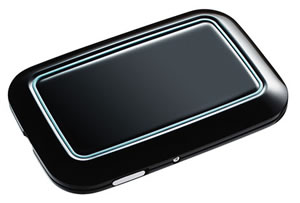 Recently Seagate announced several new and updated disk models and systems.
Recently Seagate announced several new and updated disk models and systems.
Pretty difficult to get excited about hard drives, but hey, let’s give it a go.
Seagate is probably the leading disk manufacturer and is a profitable business (several disk companies have merged or died in recent years), but Seagate looks to still be going strong and innovating in various areas.
Here’s an amazing fact – Currently there’s more storage in the home than in business (think Digital/Personal Video Recorders, iPods, centralised home storage etc) so the consumer market is extremely important. Storage requirements are only going to increase (an SD film requires 2 – 4GB while an HD file requires 8 – 20GB), by 2012 HD will overtake SD.
In terms of user generated content, in the US 47% of all video is home generated. MySpace has about 1.4billion streams which accounts for 20% of all streams on the Internet, YouTube generates about 868 million (12%).
The new pretender Facebook is signing up about 150,000 users per day and they’re uploading 6 million photos per day. All in all that a lot of storage required, and disk manufacturers love it, but as storage requirements increase they have to bring out new technologies to meet those needs.
Maxtor OneTouch
These come in 3 type variants, the OneTouch 4, OneTouch 4 Plus and OneTouch mini. The 4 and 4Plus support up to 750GB, the mini is a smaller portable unit.
Though they can just be used as external drives, they’re designed also to allow easy back-up and restore of users’ data and come with easy to use software (both for Macs and PCs).
The OneTouch 4Plus also has software that allows the PC’s system drive to be backed up, so it can easily be restored in the case of the internal drive failing or if the PC becomes infected or otherwise damaged.
 D.A.V.E
D.A.V.E
Seagate’s Digital Audio Video Experience has now been upped to 60GB. D.A.V.E. is an OEM platform that is an enabling technology delivering wireless storage using Bluetooth or Wi-Fi allowing consumers to have a centralised storage hub fitting in with the mobile experience. It will work with phones, digital still cameras, digital video cameras, portable media players, etc.
Seagate won’t be selling D.A.V.E systems directly, but only through consumer partners (likely to be mobile phone and other vendors).
DB35 series drives
These drives are designed for use in DVR’s and home media centres, being optimised for the storage and retrieval of video – though bits may be lost (which leads to the loss of frames of video – but at home, who cares). However they are quieter and generally operate cooler than standard disks.
They are now available in 250GB to 1TB models (DB35.4).
SV35 series drives
The SV35 series are designed specifically for video surveillance and other video storage systems. They’re optimised to store long series of video (without losing any information while writing) and write 16 concurrent streams.
The drives are now available from 160GB to 1TB.
 Barracuda FDE drive
Barracuda FDE drive
Seagate Barracudas are the drives you’d commonly see in a PC. The new FDE series adds Full Drive Encryption which employs Seagate’s Secure DriveTrust technology.
Assuming the PC’s BIOS supports DriveTrust (and new BIOS’ will, many laptop BIOS’ already have DriveTrust built-in), then when the PC boots it will prompt the user for a password, that password is passed straight to the drive (i.e. before any operating system is loaded) and unless it’s correct, the PC wont even boot (the OS resides on the drive and without the correct password, the OS wont decrypt). If the BIOS doesn’t support DriveTrust then the drive will look like a standard disk drive without encryption.
The encryption used is 128bit AES and the drive is NIST certified and it’s also gone through DoD, DoHS, Transport and Safety Administration and NSA testing.
The keys are held in a secure area of the firmware that is only accessible through the DriveTrust protocol.
A big advantage for companies is that drives can easily be wiped by just destroying the key, then the data on the disk is just garbage.
The drive is the normal 3.5″ form factor and spins at 7,200 rpm. Again available up to 1TB.
Momentus 5400.4 hard drive
These are Seagate’s laptop drives, now supporting up to 250GB capacity (using perpendicular magnetic recoding). They now support SATA (serial ATA) up to 3.0Gb/s.
The drives support 300G in operation and 900G when powered off (around 5G will kill a human) so are more resilient to being dropped. It’s likely the laptop will be destroyed (and it’s operator) way before the drive fails.
Cheetah 15K6 hard drives
These are for the professional server market and are available as fibre channel and SAS (serial attached SCSI). They are available 147GB, 300GB and 450GB capacities – they are also considerably more expensive than normal the Barracudas.
The Future – Solid State
Seagate wouldn’t give dates, but they have committed to solid state drives. Initially these are likely to be hybrid drives (with a solid state part and mechanical part), though purely solid state will come. Since solid state will always be more expensive than mechanical (using current RAM/ROM production techniques) it’s likely solid state will be used for things like boot drives where the data changes irregularly, as all solid state still suffers from limited write cycles.
Drive density and complexity will continue to increase (the firmware in a Seagate drive contains about 10 million lines of code) and increasingly higher drives will be developed.
Back-up will become the major issue as losing home data will be catastrophic. That can only be good news for the drive vendors as they’ll just sell primary systems and again for back-up systems.